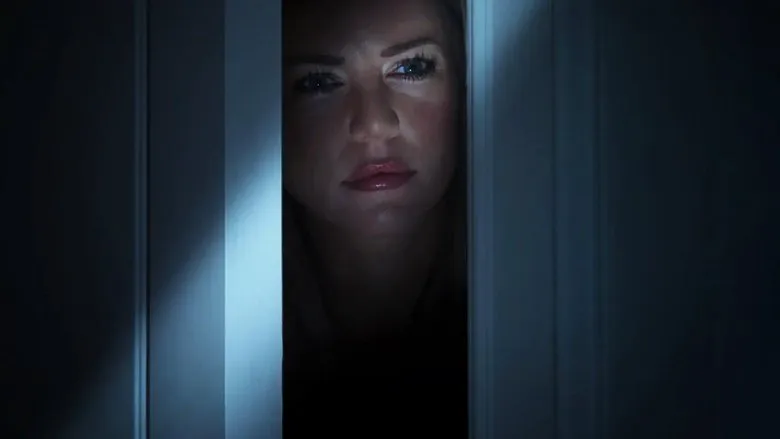In the labyrinthine world of psychological thrillers, where trust is a fragile illusion and deception lurks beneath the most benevolent facades, a masterpiece like “Killer Design” stands out. This chilling narrative, an intricate dance between savior and manipulator, captivated audiences with its razor-sharp wit and unnerving tension. But what truly went into crafting such a meticulously designed cinematic experience? Let’s pull back the curtain and explore the behind-the-scenes artistry that brought “Killer Design” to life.
The Genesis of a Devious Plot: Writing the Unthinkable
The concept for “Killer Design” arose from a shared fascination among the film’s screenwriters: the ultimate power dynamic of control disguised as gratitude. “We wanted to explore how far someone might go to orchestrate a life, not out of malice in the traditional sense, but as a calculated chess move for power,” explains lead screenwriter Eleanor Vance. The core idea – a life-saving act as the precursor to insidious manipulation – was deemed “horrifically brilliant” by director Marcus Thorne.
The screenplay’s greatest triumph lies in its slow, deliberate unraveling. Early drafts experimented with quicker revelations, but the consensus was to embrace a ‘slow burn’ approach. “The discomfort needed to simmer,” Thorne elaborates, “allowing the audience to feel Sarah’s growing unease just as she did. The twist wasn’t just a shock; it was a horrifying realization that all elements of her life had been carefully orchestrated.” This patient storytelling allowed the intricate psychological chess match between Sarah and Alex to truly breathe, cementing an atmosphere of creeping dread.
Designing the Characters: A Study in Contrasts
At the heart of “Killer Design” are its two formidable female leads: Sarah Jenkins, the talented interior designer, and Alex, her enigmatic rescuer-turned-assistant. Casting was pivotal, as the success of the film hinged on the palpable, albeit deceptive, chemistry between them.

For Sarah, the filmmakers sought an actress capable of conveying both fiercely independent ambition and a deep, relatable vulnerability. “Sarah’s journey from gratitude to dawning horror, and subsequently to a steely resolve, required an incredible range,” says casting director Linda Chen. “She had to embody the audience’s growing sense of entrapment.” The chosen actress mastered the subtle shifts, often conveying more with a glance or a faltering smile than with dialogue.
Alex, however, proved to be an even greater acting challenge. “Alex isn’t a typical villain seeking revenge; she’s an operative, almost an expressionless force of nature,” Thorne notes. “She had to be unnervingly calm, a chameleon who blends seamlessly, yet leaves a lingering sense of something ‘off’.” The actress cast as Alex delivered a masterful performance, portraying the character’s calculating detachment with chilling precision, only allowing a fleeting glimpse of humanity to surface during the intimate dinner scene – a moment designed to mislead both Sarah and the audience. “That moment of false warmth was crucial,” Vance adds, “because it cemented Sarah’s illusion of a bond, making the subsequent revelation even more devastating.”
The Visual Symphony of Betrayal: Setting the Scene
Director Marcus Thorne’s vision extended well beyond just the performances. He envisioned a world where opulence and beauty masked sinister intentions. “Since Sarah is an interior designer, it was crucial that her environment, the spaces she creates and inhabits, mirrored her psychological state,” Thorne explains.
Early in the film, Sarah’s meticulously designed apartment reflects her control and ambition. As Alex’s influence grows, subtle shifts in lighting and camera angles begin to portray the same spaces as luxurious cages. The production design team worked closely with Thorne to choose color palettes that initially felt bright and hopeful, gradually introducing colder, more sterile tones to reflect Sarah’s diminishing autonomy. Even Alex’s high-end apartment, initially a symbol of Sarah’s generosity, subtly transforms into a surveillance hub, representing the absolute control Alex exerts.

The cinematography also played a vital role in building tension. Close-ups during key dialogue scenes emphasized Sarah’s paranoia and Alex’s unnervingly calm demeanor. Wider shots often isolated Sarah, visually reinforcing her growing sense of entrapment within her own supposedly perfect life. The car accident scene, specifically, was crafted to be jarring and chaotic, immediately establishing the violent disruption that initiates Alex’s plan, yet keeping the true orchestrator hidden in plain sight.
The Unmasking: A Deeper Look at “Killer Design”
Beyond its thrilling plot, “Killer Design” delves into profound themes: the precariousness of trust, the unseen forces that can shape our lives, and the psychological warfare waged for control. It challenges the audience to consider the true cost of success and the pervasive nature of manipulation in influential circles.
The film’s title, “Killer Design,” becomes a potent metaphor – referring not just to Sarah’s profession, but to Alex’s carefully constructed plan, a truly artistic (and deadly) design of exploitation. The ambiguity of the ending, leaving Sarah’s struggle unresolved, was a deliberate choice by the filmmakers. “We wanted to leave the audience with that nagging question: ‘Can she truly reclaim her life?’” Thorne concludes. “It’s a testament to the chilling notion that sometimes, the most dangerous prisons are the ones built on gratitude and dependence.”
“Killer Design” is more than just a thriller; it’s a meticulously crafted character study and a stark warning, brought to life by daring performances, a brilliant script, and visionary direction. It reminds us that often, the grandest designs hide the darkest intentions.